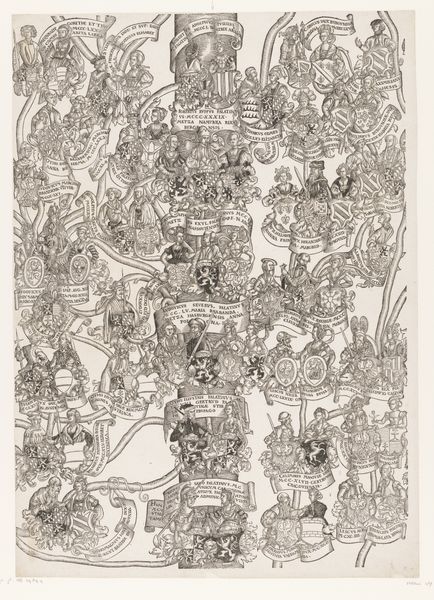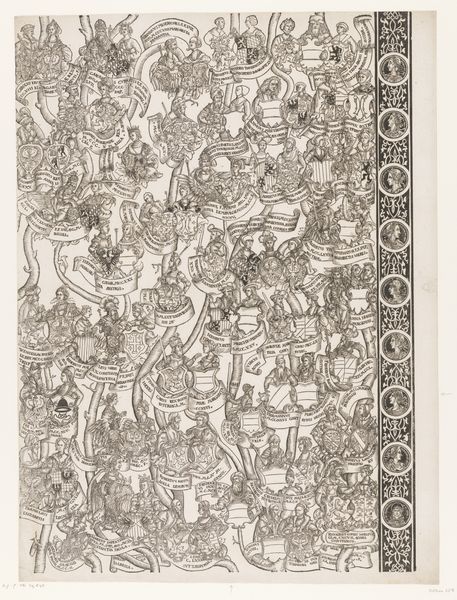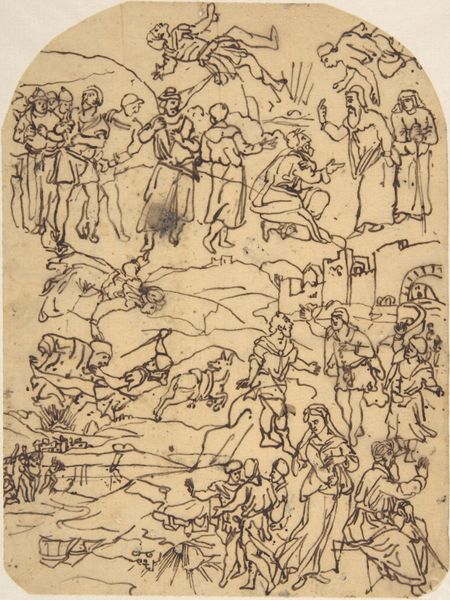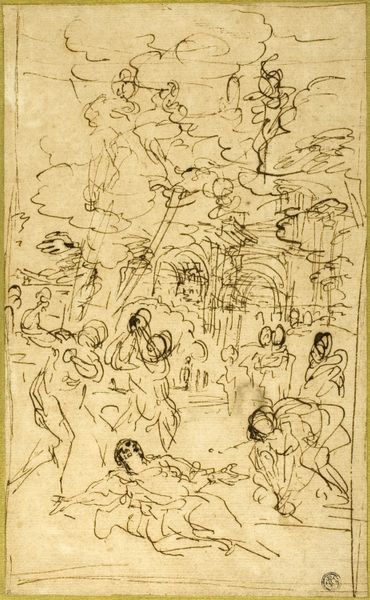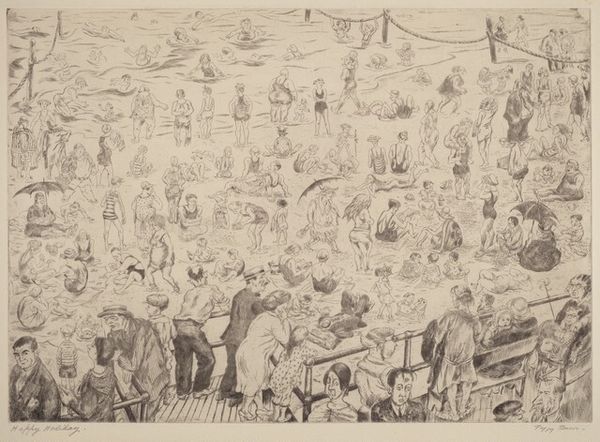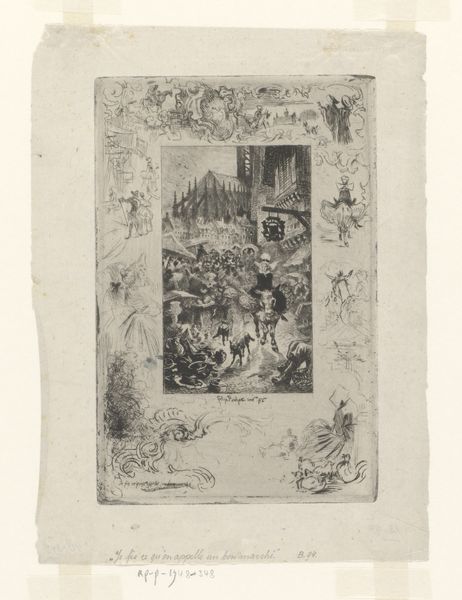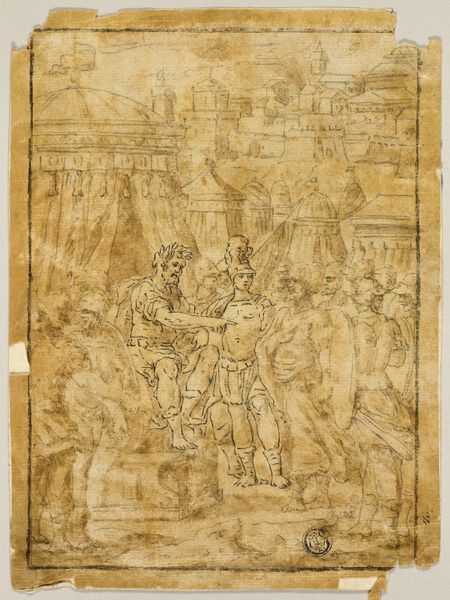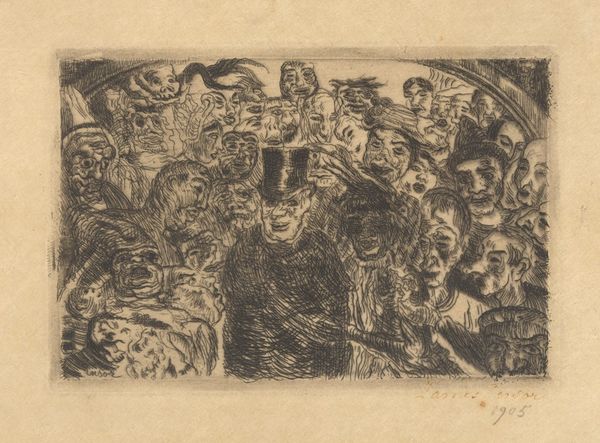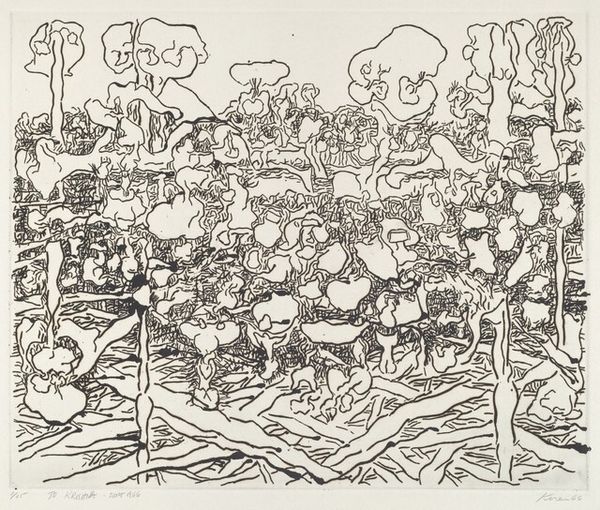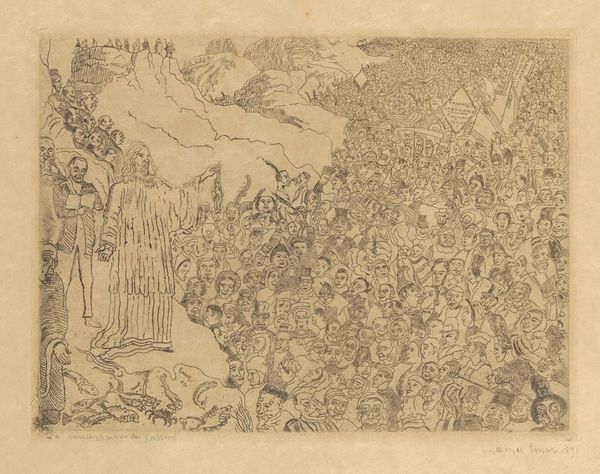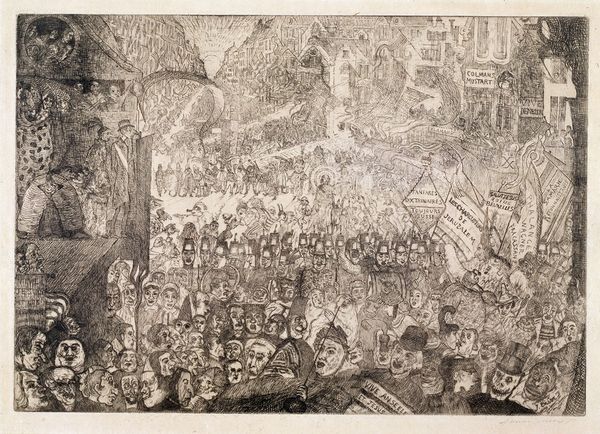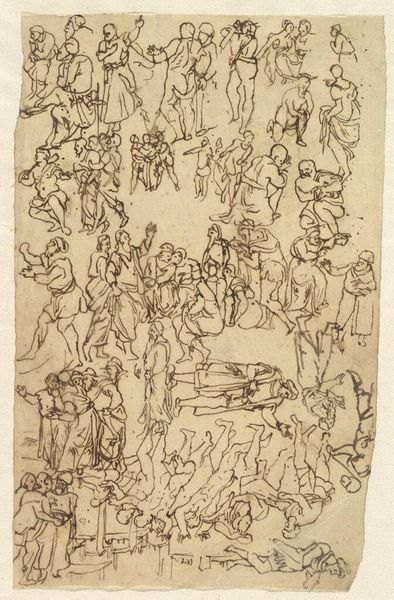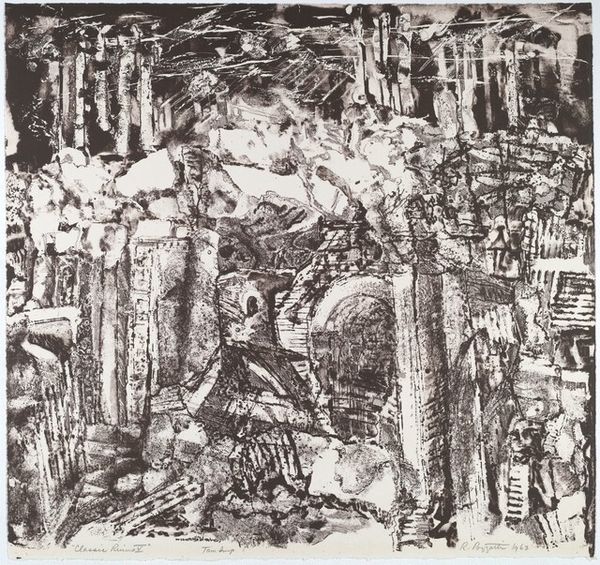
drawing, print, etching, engraving
#
drawing
#
ink drawing
#
narrative-art
#
pen drawing
# print
#
impressionism
#
pen sketch
#
etching
#
figuration
#
history-painting
#
engraving
Copyright: Public Domain: Artvee
Editor: Wow, what a densely packed image. It's incredibly unsettling...like a bad dream with too many faces. Curator: Indeed. What you're experiencing aligns with the potent themes that Belgian artist James Ensor explores in his work, such as the mockery and isolation of the individual. This etching, titled "Christ Mocked," was created in 1886. Editor: Etching, you say? The level of detail is astounding! But it contributes to this sense of chaotic energy... everyone crammed together, gawking. I feel like I’m intruding, or perhaps being implicated. Curator: Consider that Ensor created this during a period of great social and political upheaval. The narrative of Christ's suffering here serves as a powerful indictment of social structures, revealing their potential for cruelty and hypocrisy. He implicates us all. Editor: It’s fascinating to see how he renders light – these frenetic bursts. Almost feverish. It definitely directs our gaze, making sure we don't miss the central figure amidst all the...the weirdness. Look at those strange masks some of them wear! Curator: The masks are a signature element of Ensor’s style, serving as commentary on the roles individuals play in society, concealing their true identities or motivations. The performance of judgment, as we see here, reveals its artifice and often dehumanizing effect. They expose the absurdity of crowds. Editor: You know, there’s almost a theatrical quality to the composition… as though Christ is an actor on a stage. But he's not acting, is he? That’s what hits me so hard, that jarring contrast. Curator: Exactly. Ensor invites us to examine the performance of power, the nature of truth, and the ease with which crowds can descend into mockery and violence, whether literally or metaphorically. This becomes a deeply affecting historical commentary with resonances still felt today. Editor: It definitely resonates. I feel emotionally drained just looking at it. It’s one of those pieces that stays with you, niggling at the back of your mind long after you walk away. Curator: Ensor’s capacity to make viewers question social dynamics and human behavior contributes to the etching’s ongoing importance. Editor: True. I came in seeing a crowded image, and now I see it is a mirror. A very disturbing mirror.
Comments
No comments
Be the first to comment and join the conversation on the ultimate creative platform.
